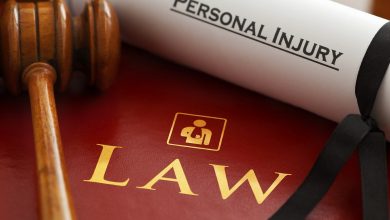Plea Bargaining Basics, History, and When to Accept

Plea bargaining is an essential tool used in courts of all levels throughout America. It is a method that allows for the judge, the defense, and the prosecution to collaborate towards a mutually beneficial outcome that expedites the judicial process. In this article, we’ll go over the basics of plea bargaining, including when you should accept a deal and the history of the practice.
A plea bargain happens when the defense negotiates a deal with the prosecution to receive a reduced sentence. In return, the defendant pleads guilty to the crime and forgoes having a trial. While plea bargaining is now a common practice in the majority of cases, it is a relatively new practice in the history of criminal law.
Plea bargains can be distinguished as either implicit or explicit. Explicit plea bargains are the more desired of the two, as they are official agreements between the defense and the prosecution. Implicit plea bargains do not promise any form of leniency. They are simply an understanding that the defense will be entering a guilty plea on the hope that they will receive something less than the max sentence.
Types of Plea Bargains
The following are the three main ways to plea bargain:
- Charge Bargaining: Charge bargaining involves pleading guilty to receive a lesser charge. An example of charge bargaining could be having a felony crime reduced to a misdemeanor.
- Sentence Bargaining: A guilty plea is exchanged for the promise of a reduced sentence. This is common when the amount of time the defendant has already served is sufficient to complete the sentence.
- Count Bargaining: The defendant is facing multiple charges and pleads guilty in order to have the number of counts reduced.
According to Britannica, research has demonstrated that those that plead guilty are likely to receive a more lenient sentence than those who go to trial facing similar charges. The propensity for a more severe punishment when going to trial increases even more in felony cases. It may come as a surprise that research reveals pleading guilty to a crime can decrease a sentence length by nearly 70 percent.
However, despite the benefits of taking a plea deal, dissenters believe them to be a miscarriage of justice. An example of the downside of plea bargains is an innocent defendant facing a lengthy trial with an unknown outcome choosing to take the deal instead. Another example is someone who has committed a serious crime that may get off the hook with a lower sentence and return to a criminal life.

History of Plea Bargaining
Plea bargaining has only been a mainstay in criminal justice starting in the last quarter of the 20th century. It wasn’t until the 1960s that plea bargaining even became a viable option in cases.
While there are examples of plea bargains dating back hundreds of years, modern-day plea bargains are negotiated for much different motivations. In the past, plea bargains were seen as a way to encourage confessions, while today, plea bargains are motivated by efficiency and mutual benefits to both parties.
The Salem Witch Trials
In 1692, the infamous Salem witch trials took place. During the trials, the women accused of witchcraft were offered a deal: confess to the crime, and your life will be spared.
The motivation for the courts was to discover as many witches as possible using information from the defendants. While lives were saved as a result of this crude form of a plea bargain, it is exceedingly likely that many innocent defendants pleaded guilty to a crime they did not commit. The Salem witch trials are now viewed as a prime example of the downside to plea bargains.
Joan of Arc
In 1431, 17-year-old Joan of Arc led an army to aid in the Siege of Orleans, which had lasted for half a year. Upon Joan’s arrival, though, the siege lasted just nine more days. Many historians believe that, if the English took Orleans, they would have ultimately conquered all of France.
After leading several more victories, Joan was heralded for her role in France’s ultimate victory in the Hundred Years’ War. However, the following year Joan was captured by a group in France aligned with the English. They delivered Joan to England, where she was offered a plea deal of sorts: confess to your crimes, and you will not be executed. Joan confessed but later recanted. She was found guilty of several charges and was executed.

Plea Bargaining in Early America
Plea bargains were a rarity in early America. If a defendant offered to plead guilty and make a deal, it would have come as a surprise to everyone in the court. The main reason for the lack of plea bargaining is that, before the 18th century, most trials were done without legal representation for the defense.
The prosecution may have included a lawyer, but it was not uncommon for a judge to take over this duty and deal directly with the defendant. Because of this, trials moved much quicker, and courts could handle up to 20 felony cases in one day. Without the need for expedience and lacking a representative to seek out a deal for the defense, plea bargains were not necessary.
Pre-Civil War 19th Century
By 1832 in Boston, though, plea deals began to happen with more regularity. The deals looked similar to some of the plea bargains today, with reduced sentences in exchange for a guilty plea. Around 1850, plea bargains began to appear in felony cases.
In these cases, which were all in trial courts, it was no longer surprising to see all three types of plea bargains in place with the defense and prosecution working together. In Boston, these plea deals stemmed from victimless crimes, which allowed the prosecution to feel better about lessening a sentence.
Civil War Era Plea Bargains
By the time of the Civil War, plea bargains became more common in appellate courts. Although members of the courts again acted surprised when the plea deals were first introduced, the practice began to slowly catch on throughout the rest of the 19th century.
Plea Bargaining in the 20th Century
By the 20th century, plea deals began to grow exponentially in popularity. Research from New York revealed that around 80 percent of defendants pleaded guilty from the years 1900-1907.
Further research in the 1920s revealed that plea deals were becoming standard practice across the country. In the largest county in Illinois, Cook County, which includes the City of Chicago, research showed that over 95 percent of felony cases featured plea bargains.
However, despite the increased popularity of plea deals, they were not accepted as legitimate practices by the general public until the 1960s delivered several significant decisions that shaped the future landscape of law.
1963: Gideon vs. Wainwright
Clarence Gideon was a Florida man that had spent much of his life in and out of prison for misdemeanor crimes. In 1963, Gideon was charged with breaking and entering with the intent to commit a crime, which is considered a felony in Florida.
On his court date, Gideon arrived without an attorney and made a request to the judge that he be granted legal representation because he could not afford it himself. However, the judge rejected Gideon’s request, saying that an attorney could only be appointed for capital crimes.
Gideon went on to represent himself in the case, speaking to the jury, calling witnesses, and declining to testify himself. He was found guilty and was sentenced to five years in jail. But Gideon was not done representing himself.
In a petition to the Florida Supreme Court, Gideon argued that his sentence and conviction were not valid, as his constitutional rights were denied when the judge failed to assign him an attorney. The Florida Supreme Court rejected Gideon’s petition.
However, Gideon then brought his complaint in front of the United States Supreme Court, and they agreed to listen to the case. In a prior case in 1942, the Supreme Court ruled in Betts vs. Brady that failing to grant a defendant an attorney in a felony case was not a breach of the 14th Amendment’s clause of due process.
When the Supreme Court agreed to hear Gideon’s case, they were also determining if the Betts vs. Brady ruling should be overturned. And in a reversal of the previous decision, the Supreme Court unanimously overturned the Betts ruling. They argued that the promise of legal representation was a basic right that was critical to the legal process.
What this landmark decision meant for plea bargaining was that, with more defendants receiving legal counsel, there was a much higher chance that a deal could be reached between the defense and prosecution.
1966: Establishment of Miranda Rights
Another significant development in the 1960s was the establishment of Miranda rights. In 1963, Ernesto Miranda, a known peeping Tom, was arrested for the abduction and rape of an 18-year-old woman from Phoenix. Police were able to lift a confession out of Miranda, which was soon after recanted. Miranda was convicted, and while he was in an Arizona jail, his appeal was taken up by the American Civil Liberties Union.
The Supreme Court overturned Miranda’s conviction, but Miranda was convicted in a re-trial in 1966. The ultimate outcome was that, due to Miranda’s case, every person that is arrested must be made aware of their rights in the familiar police drama refrain of “everything you say can and will be used against you in a court of law.”
What did Miranda rights have to do with plea bargaining, though? With offenders being made aware of their rights, they tightened their lips when being arrested and interrogated, leaving the talking to their attorney. This newfound awareness of rights led to less evidence for the prosecution to use, which led to plea bargains becoming more of an option for the prosecution. And if the offender was truly guilty of the crime, they would be more likely to take a lessened sentence rather than go to trial.
1967
Defendants at this time were advised not to reveal that a deal had been reached once they were back in public life for fear that people would not trust that the plea was voluntary. But in a 1967 federal report, plea bargains were recognized as a legitimate and accepted practice.
1969: Boykin vs. Alabama
In 1969, the case of Boykin vs. Alabama set a new precedent, which ensured that the defense’s guilty plea was voluntarily submitted. The defendant, Boykin, had received five death sentences on five counts of robbery because the judge did not guarantee that the guilty plea was voluntary. The U.S. Supreme Court reversed the conviction and put the onus on judges to verify in court that the plea was voluntary.
The 1970s
In 1970, the Supreme Court allowed those that pleaded guilty to do so without confessing responsibility for the crime. The next year the Supreme Court again ruled on a case involving a plea deal, giving defendants legal recourse in the event that a prosecutor broke the conditions of an agreement.
The last ruling involving a plea deal in the 1970s came in 1978. This ruling stated that if a defendant refused to bargain for a deal, it was acceptable for the prosecution to add charges, assuming they were legitimate.
These combined rulings over a ten-year span legitimized plea bargains in the United States and laid out a groundwork for what was and was not acceptable at the bargaining table.

Advantages of Plea Bargains
A plea bargain has three main benefits that can potentially satisfy all parties in a criminal case:
- The judge gets a swift decision, and no further court time must be spent on the case.
- Prosecutors get a guaranteed guilty verdict and record the outcome as a win.
- The defense receives a more advantageous outcome than if they were to go to trial and be found guilty.
The crucial advantage of a plea bargain is that the defense and prosecution lower their risk by eliminating the possibility of a decisive loss that would be determined almost entirely by a jury. Prosecutors increase their rate of convictions and also use plea bargains as a means of gaining information on other suspected offenders.
Trials are also expensive and not always viewed as reliable in serving out justice. Rather than allow a defendant to get off the hook on a technicality, a plea bargain efficiently provides a conviction.
One of the most significant benefits of plea bargaining for the prosecution is the sheer efficiency it provides. Public defenders are usually inundated with a lengthy backlog of case files, and private attorneys make higher profits by negotiating as many plea deals as possible.
Drawbacks of Plea Bargains
If you know that your legal representation is likely hoping for a plea deal to avoid a time-consuming trial, you would be right to question their motivations. An attorney is paid to look out for the well-being of their client, but defendants should not be bullied into agreeing to a deal.
The drawbacks of a plea bargain go both ways. Some argue that plea bargains allow criminals to avoid the punishment they deserve, while innocent parties may end up pleading guilty to a crime they did not commit.
When to Accept a Plea Bargain
Today, the vast majority of cases are plea-bargained and never go to trial. It is not uncommon for a trial to cost over a million dollars for each side of the case. With all parties motivated to make a deal, a plea bargain is the most likely outcome in the majority of cases.
Your attorney should be filing pre-trial motions to gain further clarity on your situation. If you win these motions, you will have the leverage in a potential plea deal. Knowing that the prosecution would rather not go to trial, your attorney should be able to negotiate the best possible outcome.
The only time you should not accept a plea deal is if you are truly innocent of the crime, and your lawyer believes you have a legitimate case. Even if your lawyer believes you have a case, but you are guilty of the crime, a plea deal is likely to result in a more appealing outcome. Ultimately, you should hire a lawyer you trust and listen to his or her advice.
Bottom Line on Plea Bargaining
While a plea bargain may not be perfect in the eyes of the general public, they are an essential function of the legal process. A defendant is unlikely to take a plea bargain if they are genuinely innocent. And while that person may deserve a harsher sentence in the eyes of some, going to trial does not guarantee that justice will be served.
A plea bargain ensures a conviction for the guilty party, keeps the flow of cases moving efficiently through the courts, and leaves both the prosecution and the defense feeling somewhat satisfied with the outcome.



